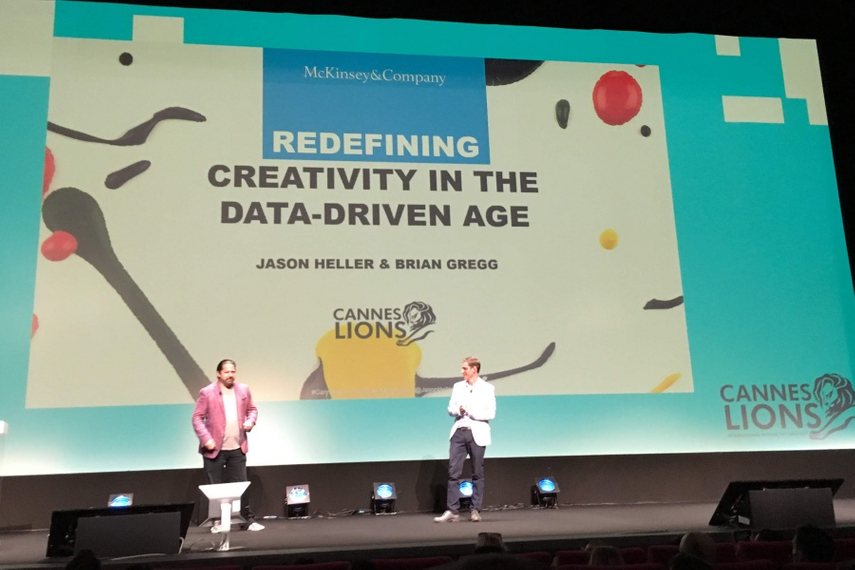
Forget about deciding whether marketing should be data-led or creativity-led. That’s a false dichotomy. The reality, according to fresh McKinsey research, is that companies that manage to effectively integrate their creative process with their data-analytics efforts grow two times faster than their peers.
The claim comes from research with 200 CMOs and other marketing leaders, which McKinsey’s Jason Heller, partner and global lead for digital marketing, and Brian Gregg, senior partner, unveiled here at Cannes Lions 2018 today.
“It’s not enough to have data and creativity,” Heller said. “Having those in silos doesn't matter. It’s the integration that makes the difference.”
The research segmented companies into three categories: the integrators (those that are effectively combining data with creativity), the isolators (those that are building capabilities in both disciplines but not bringing them together well), and the idlers (which are not really taking action).
McKinsey outlined three pieces of takeaway advice companies that want to emulate the integrator group need to work toward.
1) Treat creativity and data as equal partners
Integrators are doing a better job bringing analytics and data into such functions as deriving consumer insights and analyzing the customer journey. And far from being a dry process, data can make creatives salivate. “It’s a perfect feed into the creative process,” Gregg said.
2) Break down silos with agile marketing
The ‘agile’ model brings cross-functional teams together to be laser-focused on a specific objective. It’s not easy to bring creative, analytics, data, media, brand and IT expertise together, but it has a significant impact, and the most successful brands are adopting the approach quickly, Heller and Gregg said. Idlers, meanwhile, have very little interaction between marketing and IT, for example.
3) Seek whole-brained talent
The pair was quick to point out that very few perfect amalgams of the superpower creative and the data-science expert actually exist. But smart companies are not wasting time looking for these mythical Einstein-Picasso combinations. Instead, they have a new profile they're looking for. They want creative people who are nonetheless interested in and actively seek out what analytical types are doing, and they want the mirror-image—data people who have an avid interest in the creative process.
A second way integrators are seeking the right talent is by using more agencies, compared with the idler and isolator groups, and by bringing more functions in-house, according to the presenters. There is no magic solution, but the fact that higher-functioning companies are trying a wide variety of approaches is apparent.
Campaign UK has some more details from the research.





.jpg&h=334&w=500&q=100&v=20170226&c=1)
.jpg&h=334&w=500&q=100&v=20170226&c=1)

.png&h=334&w=500&q=100&v=20170226&c=1)













